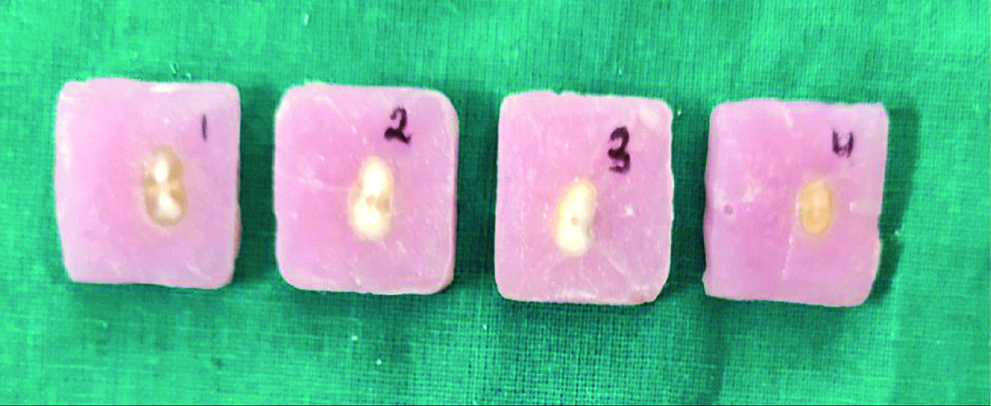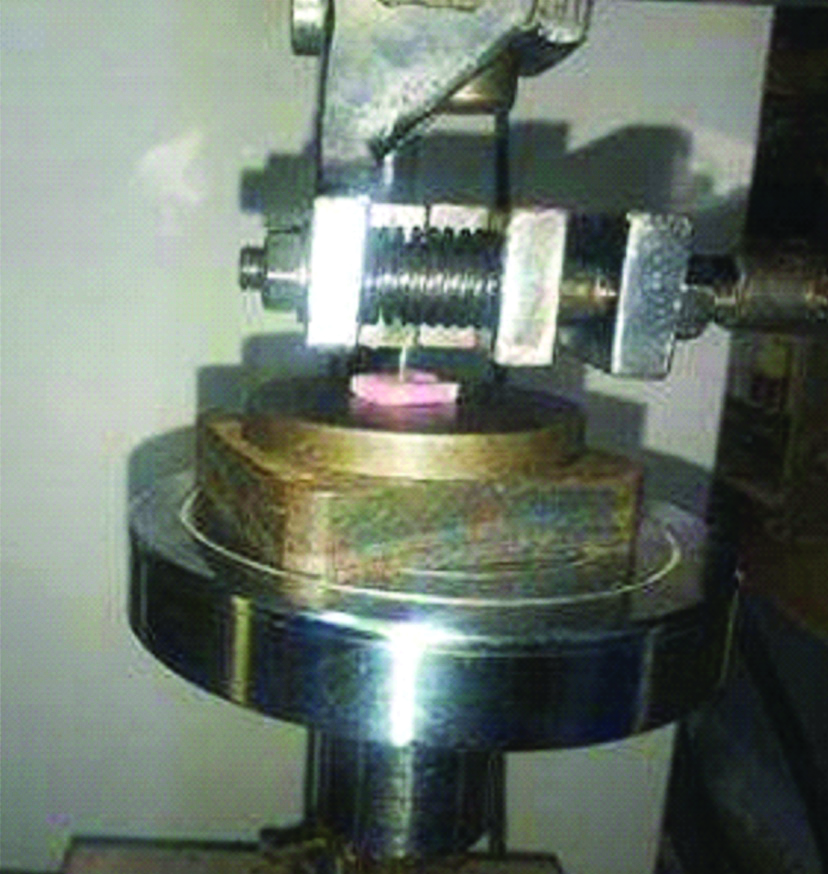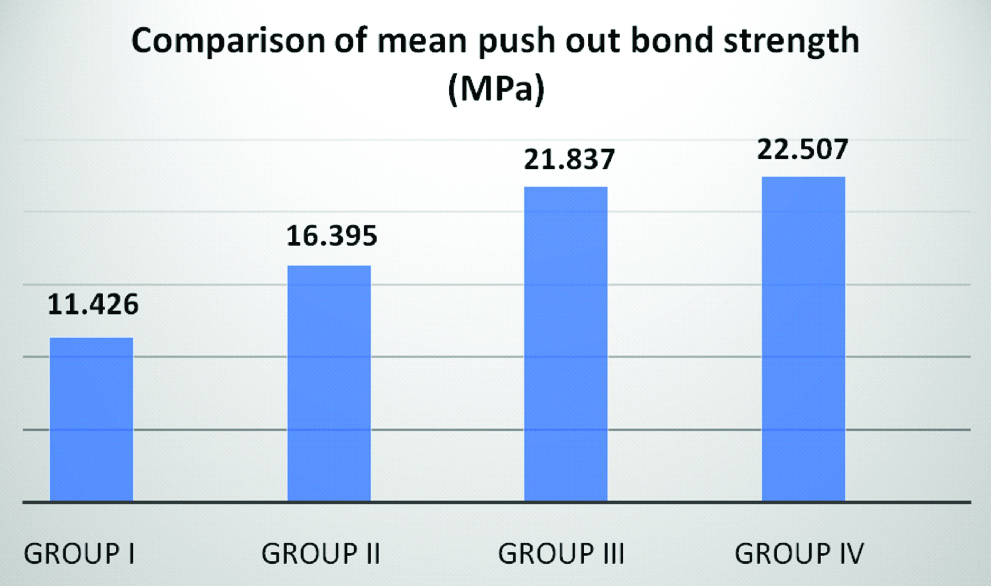For successful completion of the root canal treatment in endodontics, it is mandatory to achieve profound pulpal anaesthesia to overcome fear and anxiety associated with root canal therapy with effective pain management [1]. The most commonly used local anaesthetic solution for pulpal anaesthesia is 2% lidocaine hydrochloride with adrenaline (1:100,000 concentration) as it is effective at lower concentration and have reported less allergic characteristics [2].
For achieving mandibular anaesthesia, Inferior Alveolar Nerve Block technique (IANB) is the primary standardised technique, whereas local infiltration technique is used to anaesthetise the maxillary teeth. But IANB technique reported to have failure rate of 30-45% even after following the standardised technique. Adjuvant anaesthetic techniques with intraligamentary/intraosseous methods and/or intrapulpal injection methods are used to achieve pulpal anaesthetic effect following the failure of these conventional methods [3]. From the above mention techniques, IPI is most preferred technique, commonly used in patients with “hot tooth”. The significant factor leading to its success is its administration under pressure [4].
Following IPI technique, NaOCl is usually employed in the routine cleaning and shaping procedures in root canal treatment, which is the most widely used irrigation solution for pulp tissue dissolution in the field of dentistry [5]. Study done by Vidhya N et al., have shown that chemical interaction takes place between LA and NaOCl resulting in formation of precipitate (2,6-xylidine) which is known carcinogen [6].
Successful endodontic treatment depends on the proper cleaning and shaping of the root canal system and apical seal creation [7]. Endodontic sealers are used with gutta percha to achieve a tight seal with core materials and root canal walls. Due to its sealing ability, AH Plus sealer which is an epoxy resin based root canal sealer is often used with gutta percha [8].
The interaction of LA and NaOCl forms precipitate, action of this precipitate on sealers useful in root canal obturation have not been gauged until recent times. Thus, this in-vitro study was performed to find out the effect of the precipitate formed, with the help of anaesthetic solution as intrapulpal injection with NaOCL as irrigant on sealing ability of root canal sealers by utilising push out bond strength test. Null hypothesis tested in this study was that the bond strength may not be affected by the precipitate.
Materials and Methods
Study Design
This in-vitro study was carried out in Department of Conservative Dentistry and Endodontics, School of Dental Sciences, Krishna Institute of Medical Sciences, Karad, Maharashtra from October 2019 to January 2020.
Specimen Preparation
Forty non-carious, intact, single-rooted human lower premolars with straight roots of comparable sizes, extracted for orthodontic purposes were collected and used in this study. For the study, to obtain statistically significant results, the sample size of 40 (each group 10) was considered significant, the power of the study was 90% at 5% significance. Radiographs for all teeth were taken to validate the presence of a single canal with a mature root apex. All the teeth were first cleaned carefully to remove debris and calculus and were stored in saline until their use.
All the teeth were decoronated to attain a standardised size of 14-mm root length from the apex with the help of a high-speed diamond disc along with adequate cooling system. The foraminal opening of each specimens were sealed with sticky wax to prevent the extrusion of experimental solutions from the apical foramen. A glide path was established using #10 and #15 size K-files (Mani Inc, Tochigi Ken, Japan). Teeth were then randomly divided equally into four groups with 10 samples in each group. Group I irrigated with saline only, Group II-IPI with 2% lidocaine hydrochloride with adrenaline 1: 100,000 (2% LA) using a 27-gauge stainless steel beveled needle followed by irrigation with 3% NaOCl (Prime Dental Products), Group III-IPI with 2% LA followed by irrigation with saline and then 3% Naocl. Group IV-irrigation with 3% Naocl.
Cleaning and shaping was performed for all the specimens with Protaper Universal (Dentsply Sirona USA) rotary files till F3. For Group I: During instrumentation, irrigation was carried out using saline only. In Group II: 2% LA (0.5 %) solution was injected into the pulpal space under pressure through the orifice by using 27-gauge needle. Followed by irrigation with 3% NaOCl, in Group III: After administration of 2% Local Anaesthesia [LA], canals were irrigated with normal saline followed by irrigation with 3% NaOCl. In Group IV: Canals were irrigated with 3% NaOCl and saline between each instrumentation. The final irrigation for all the samples of group II, III and IV involved the use of 5 mL of 17% EDTA for 1 minute followed by saline.
All the canals were later dried with sterile absorbent paper points and were obturated with AH plus sealer (Dentsply Sirona) and Gutta percha (Meta-Biomed) using single cone obturation technique. All the samples were stored in distilled water at 37°C for 24 hours to allow setting of root canal sealers.
Push-Out Bond Strength
Each root was then embedded in the cold-cure epoxy resin (DPI RR COLD CURE). After setting cold cure resin, the specimens were horizontally sectioned in approximately 2-mm thick slices [Table/Fig-1] were sectioned into coronal/ middle/apical third and middle 3rd section of each specimen was subjected to testing. Each specimens were then subjected for testing micro push-out bond strength, in Universal Testing Machine [Table/Fig-2] (Stanford MC instruments Micro Computer controlled Automatic UTM, Model UTNE) which is loaded with a 0.3 mm diameter stainless steel plunger, at a speed of 0.5 mm/minute until bond failure occurred [8,9].

Specimen was attached to a support jig and placed on the base of the Universal Testing Machine (UTM).

The push-out bond strength value was calculated with the computer and software connected to the universal testing machine (Stanford MC instruments Micro Computer controlled Automatic UTM, Model UTNE). The bond strength was written in MPa, failure load was recorded (Newton) and was divided by bonded interface area (A=2πr × h, here π is the constant 3.14, r is radius of root canal and h is thickness of sliced specimen in mm) [8].
Statistical Analysis
Data obtained was tabulated and subjected to statistical analysis using one-way ANOVA. p≤0.05 was taken to be statistically significant. The data was entered in to Microsoft Excel 2010. All analyses were performed using SPSS (Statistical Package for Social Sciences) software version 20.
Results
Mean push out bond strength values of all 4 groups is shown in [Table/Fig-3]. Result shows that the minimum push out bond strength (MPa) is seen in control group i.e., Group I (11.42±3.60 MPa). Within the experimental groups, Group II showed minimum mean push out bond strength (16.39±2.40 MPa) as compared to Group III (21.83±1.25 MPa) and Group IV (22.50±2.12 MPa).
One-way analysis of variance (ANOVA) among 4 groups significant p-value <0.0001.
| Groups | Mean push out bond strength (MPa) | Std. division | p-value |
|---|
| Group I | 11.426 | 3.6054 | <0.0001 |
| Group II | 16.395 | 2.4069 |
| Group III | 21.837 | 1.2528 |
| Group IV | 22.507 | 2.1209 |
One-way analysis of variance (ANOVA) showed that there is highly significant difference among the various groups (p<0.0001) [Table/Fig-3].
Post- hoc Tukey’s test [Table/Fig-4] showed that between Group III and Group IV no statistically significant difference was seen.
Post- hoc Tukey’s test among 4 groups p-value <0.01.
| Treatments pair | Tukey HSD Q statistic | Tukey HSD p-value | Tukey HSD inferfence |
|---|
| I vs II | 6.3030 | 0.0010053 | **p<0.01 |
| I vs III | 13.2060 | 0.0010053 | **p<0.01 |
| I vs IV | 14.0559 | 0.0010053 | **p<0.01 |
| II vs III | 6.9030 | 0.0010053 | **p<0.01 |
| II vs IV | 7.7529 | 0.0010053 | **p<0.01 |
| III vs IV | 0.8499 | 0.8999947 | Insignificant |
[Table/Fig-5] shows mean push out bond strength in order of Group IV >Group III >Group II >Group I. Thus, the null hypothesis is rejected.
Comparison of mean push-out bond strength (MPa) for all groups.

Discussion
In Endodontic treatment during cleaning and shaping procedure various irrigating solutions are used in different concentrations alone or along with various combination with another irrigating solutions to achieve better disinfection of the root canal system. Along with complete disinfection, 3 dimensional sealing of root canal system using good obturating material is important for the successful endodontic treatment [10].
Various commonly potent irrigants in endodontic treatment like NaOCl, EDTA and Chlorhexidine (CHX) irrigating solution have been tested and used individually or in combination to achieve maximum antibacterial effect. Basrani BR et al., have done study on interaction between NaOCl and CHX and reported the formation of known carcinogenic precipitate i.e., Parachloroaniline (PCA) [11].
In a study done by Gupta H et al., in 2013 showed that the use of NaOCl and chlorhexidine in combination as root canal irrigation, decreases the bond strength of the sealers used for obturation [8]. Interaction between various commonly used irrigating solution have been reported in several literatures but the interaction between the anaesthetic solution and commonly used irrigating solution has not been studied much [12].
Saravanakarthikeyan B et al., used SEM to assess effect of precipitate formed by interaction of 2% LA and 2.5% NaOCl on root canal dentinal wall before and after chemo-mechanical preparation [12]. Effect of this precipitate on sealing ability has not been evaluated hence, the present study is one of the first investigation reports to evaluate the effect of LA/NaOCl precipitate formed on the sealing ability of root canal sealer which is important for the success of endodontic treatment.
During chemo-mechanical preparation use of EDTA removes smear layer which opens the dentinal tubules. Different sealers adhere to root dentin by forming tags which penetrates better into the root dentinal tubules [13]. Results in the present study shows that, in control group where the EDTA is not used, presented with minimum push out bond strength value. The reason behind this could be that the smear layer must have left intact on root dentin walls which interferes with sealer penetration, negatively effecting on push out bond strength. Intergroup comparison within the experimental group (II, III, IV) showed that the least push out bond strength is seen in group II where the interaction of NaOCl and LA forms precipitate which blocks the dentinal tubules and prevents the penetration of sealers thus resulting in weaker bond strength. Whereas in Group IV highest pushout bond strength is seen, this may be due to the fact that no precipitate was formed as there was no interaction between LA and NaOCl solution.
Study done by Saravanakarthikeyan B, et al., confirmed the occlusion of dentinal tubules with a precipitate formed by interaction of NaOCl with LA. This study concluded that complete removal of precipitate can not be achieved with cleaning and shaping procedure [12].
Study have shown that when NaOCl comes in contact with LA solution, hydrolytic reaction takes place between them, hypochlorous acid released from NaOCl combines with carbon atoms present in lidocaine hydrochloride molecule, with subsequent cleavage of the double bond. Further hydrolysis process continues and forms 2, 6-xylidine (a known metabolite of lidocaine HCl) i.e., precipitate was formed [6].
This study is clinically important because in cases of failed conventional anaesthetic technique, IPI is routinely used during the endodontic treatment with no or negligible systemic effects during endodontic treatment of the tooth anaesthetised with IPI followed by irrigation with NaOCl, the toxic precipitate formed by interaction between LA and NaOCl may remain attached to the root canal wall and can slowly diffuse into the periapical area. This precipitate may also interfere with the penetration of various irrigants or intracanal medicaments and can significantly affect the 3 dimensional seal of root canal system [12]. If resultant precipitate is left in the pulp chamber, it may interfere with the coronal seal of the post-endodontic restoration.
No statistically significant result was seen between Group III and IV [Table/Fig-4]. Thus this study indicates that the immediate use of NaOCl irrigating solution should be avoided following the IPI with LA solution to avoid the formation of carcinogenic precipitate and its negative effect on bond strength of obturating materials.
Limitation(s)
As small amount of LA (0.2-0.5 mL) is employed for supplemental IPI, so the precipitate formed by interaction might be negligible and can get removed by further biomechanical preparation.
Conclusion(s)
Within the limitations of this study, it can be concluded that following IPI, immediate use of NaOCl should be avoided to prevent the formation of precipitate which occludes dentinal tubules to decrease the bond strength. Following IPI with LA, pulpal space should be thoroughly irrigated 1st with normal saline which will reduce the interaction of NaOCl with LA preventing the precipitate formation.